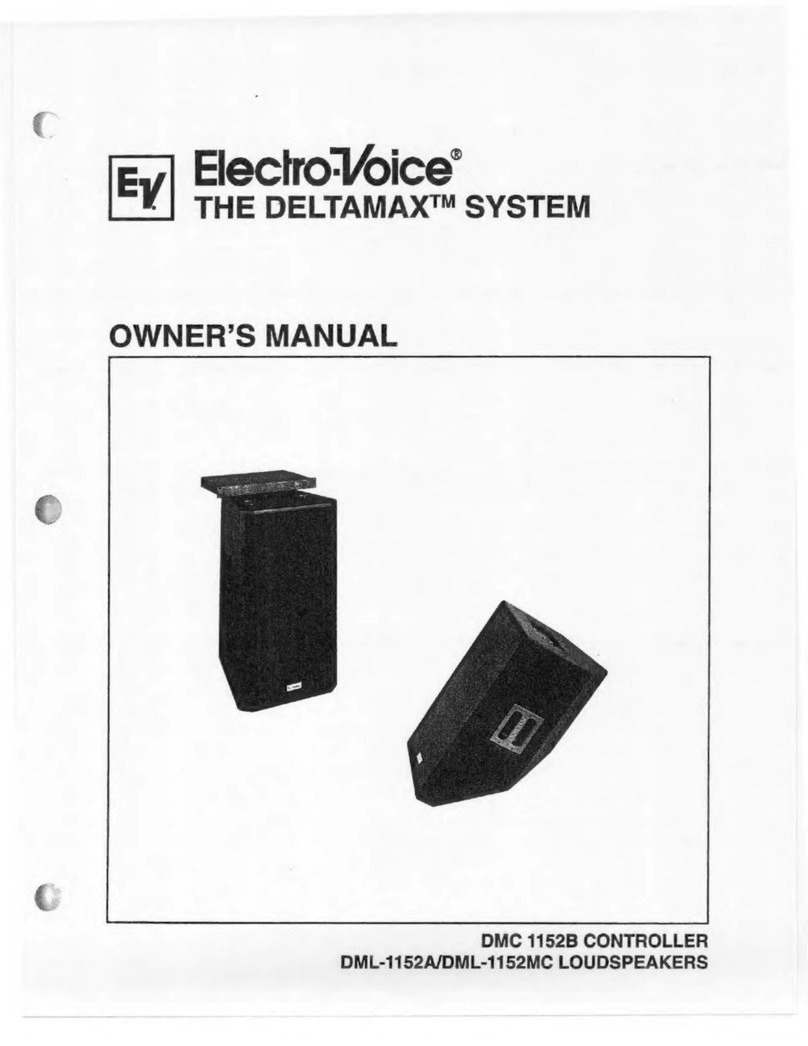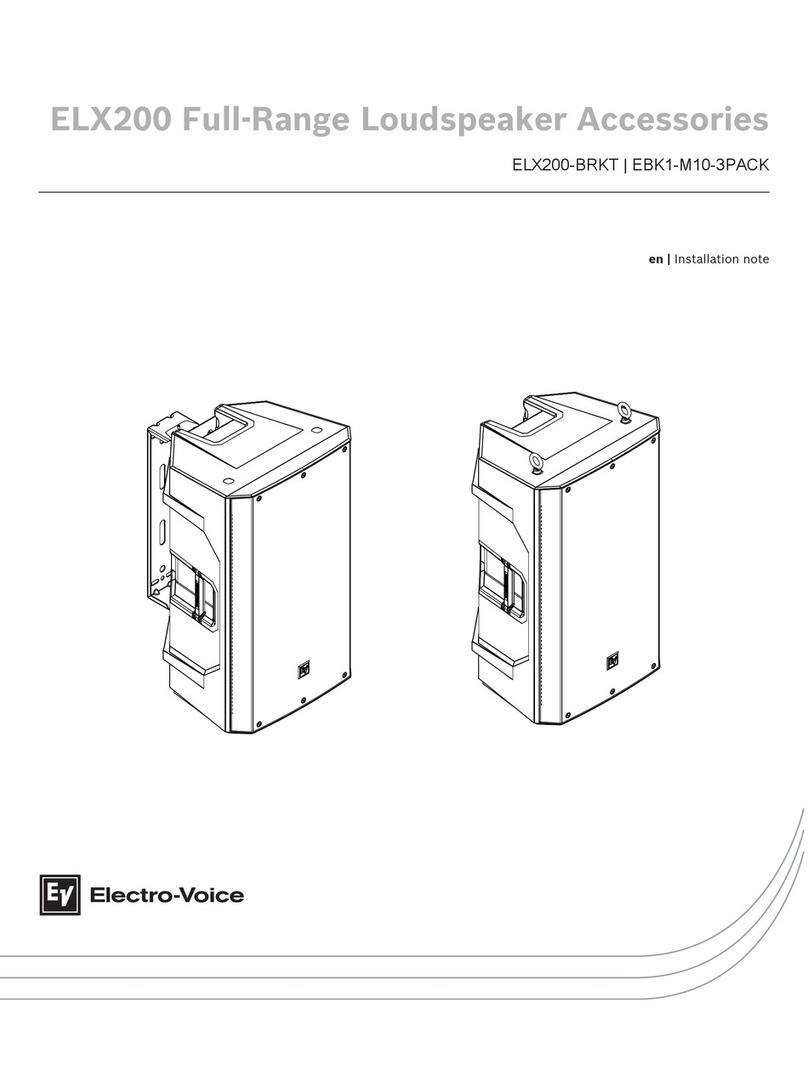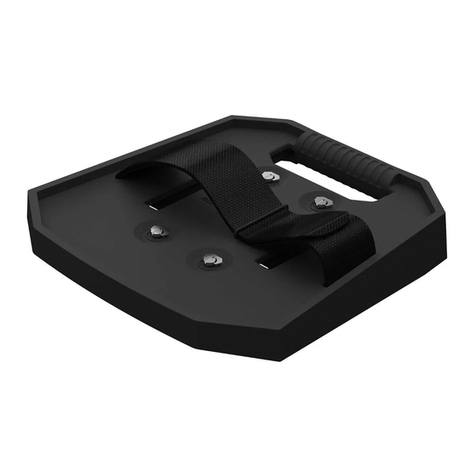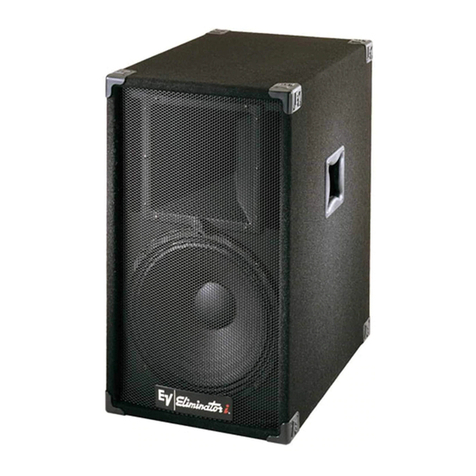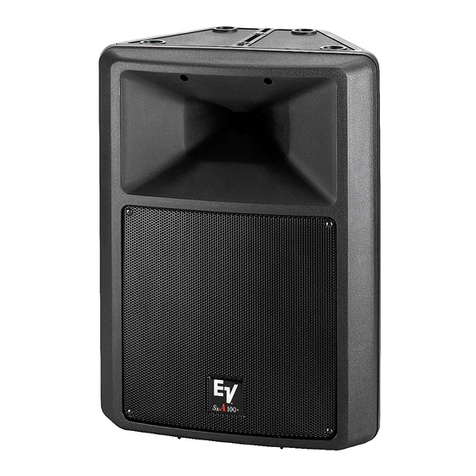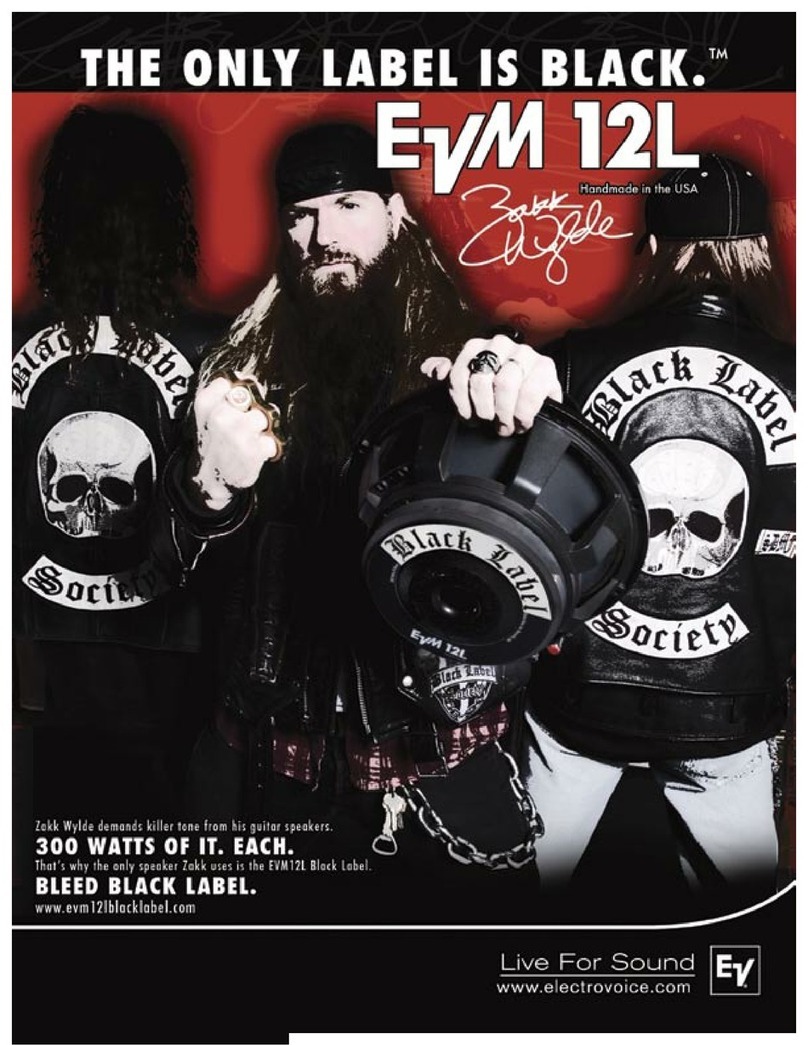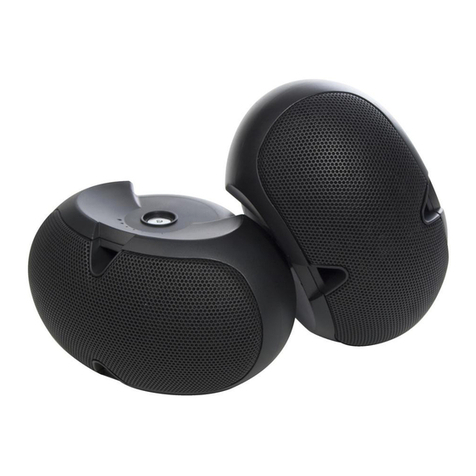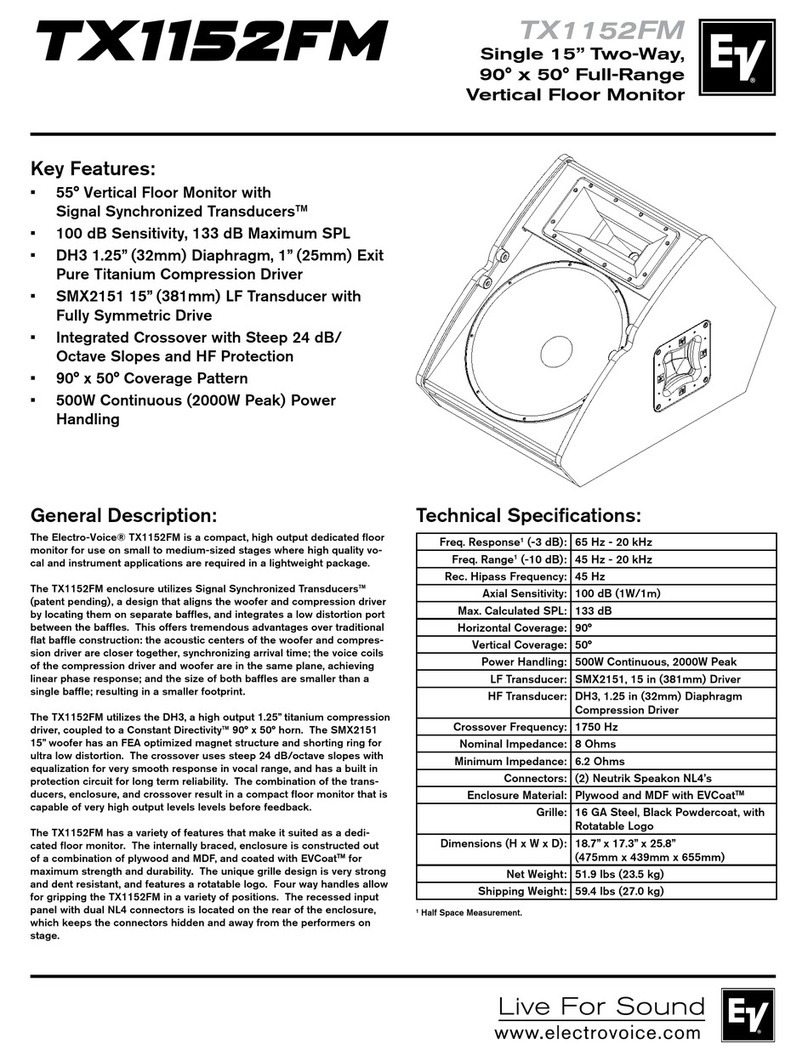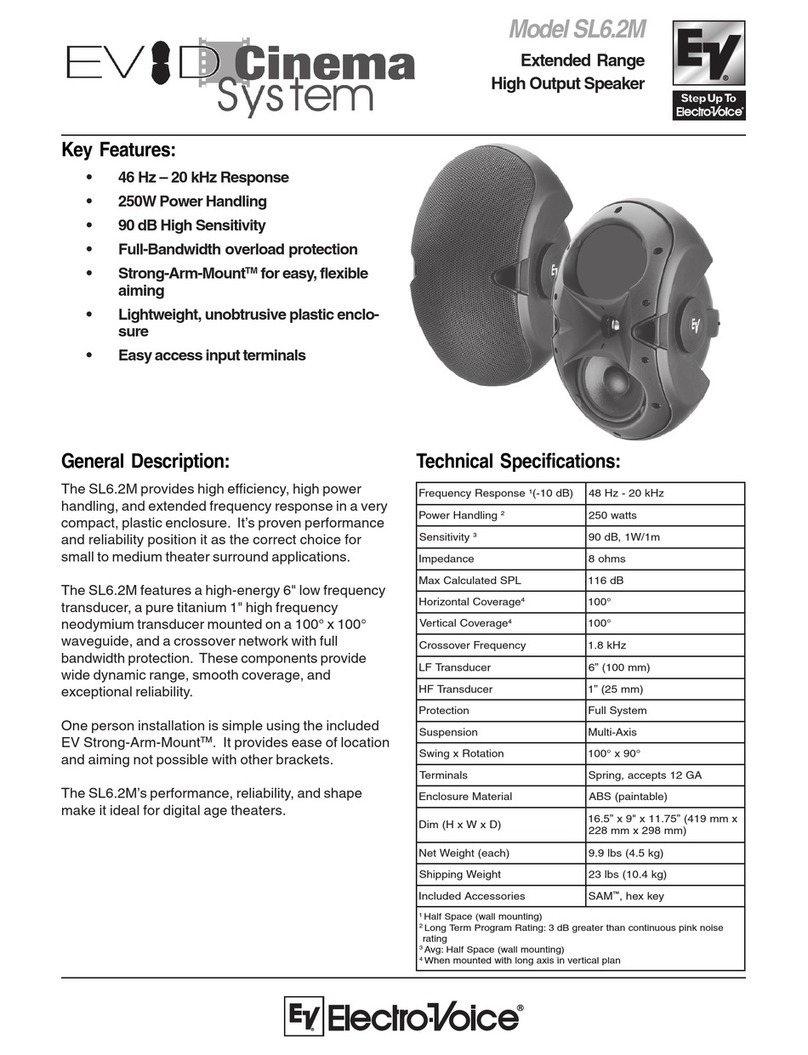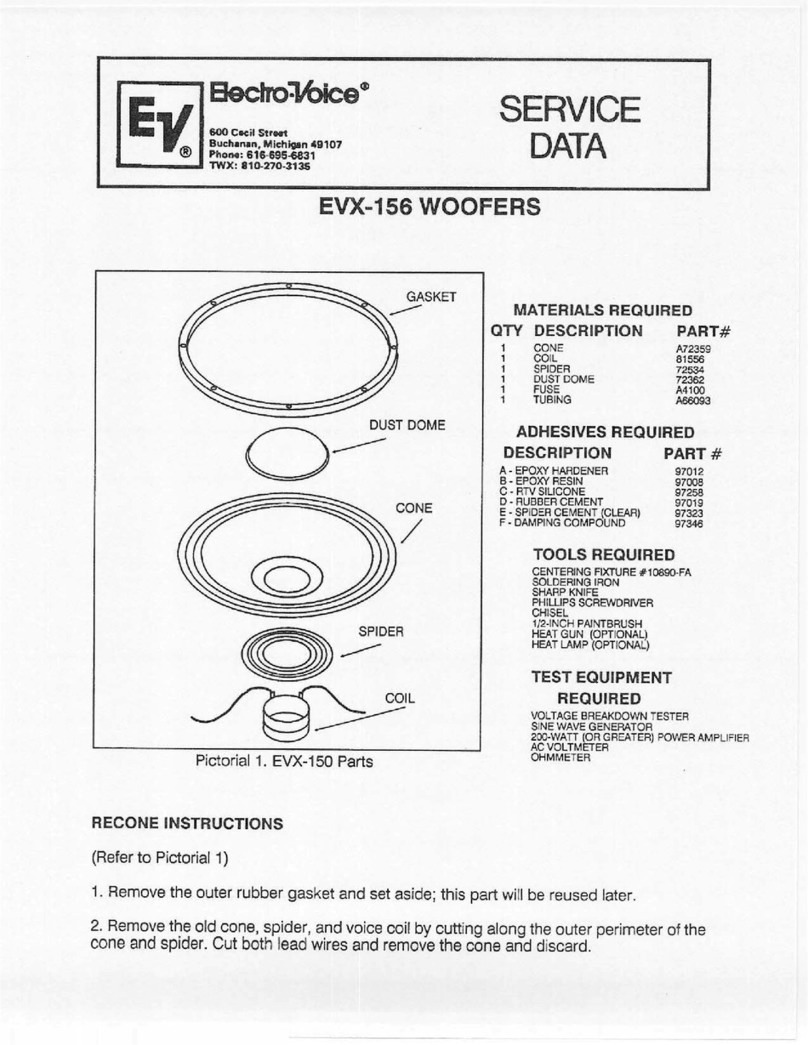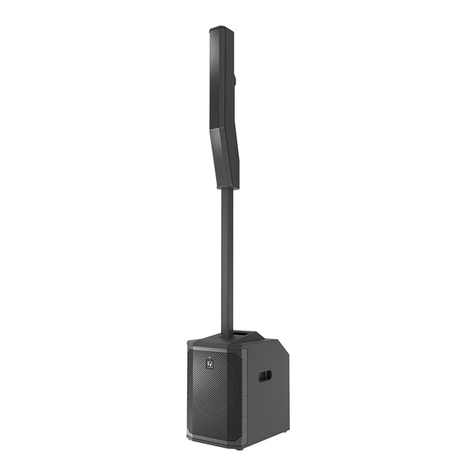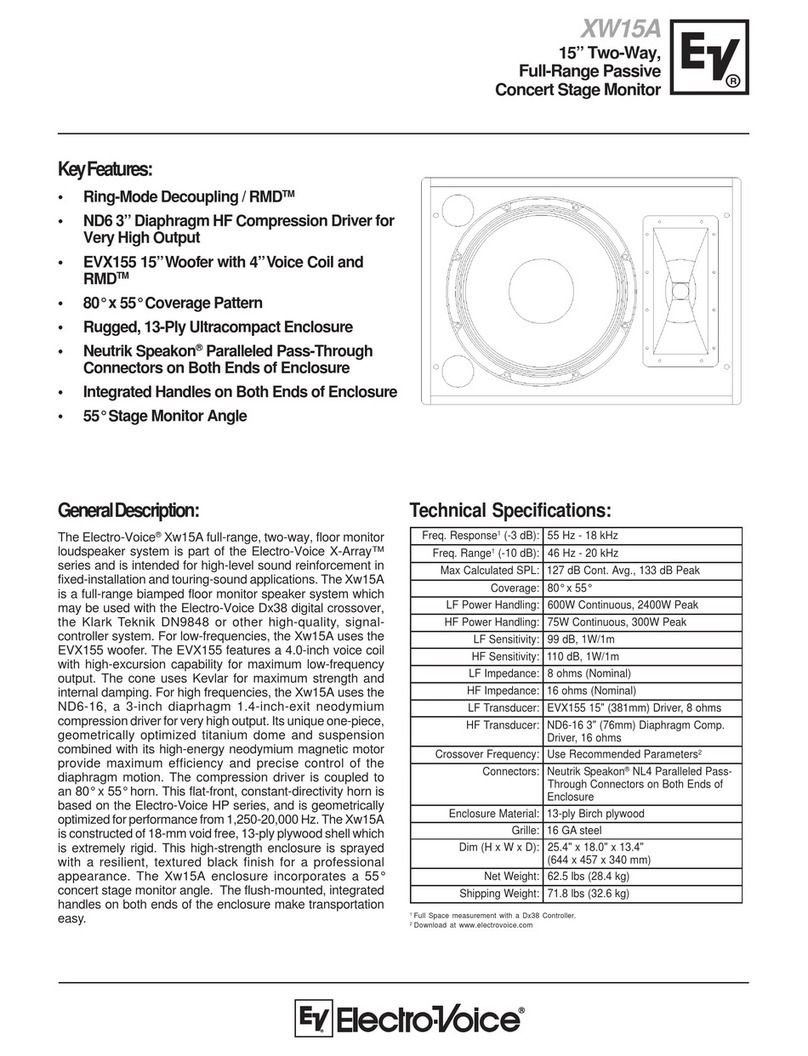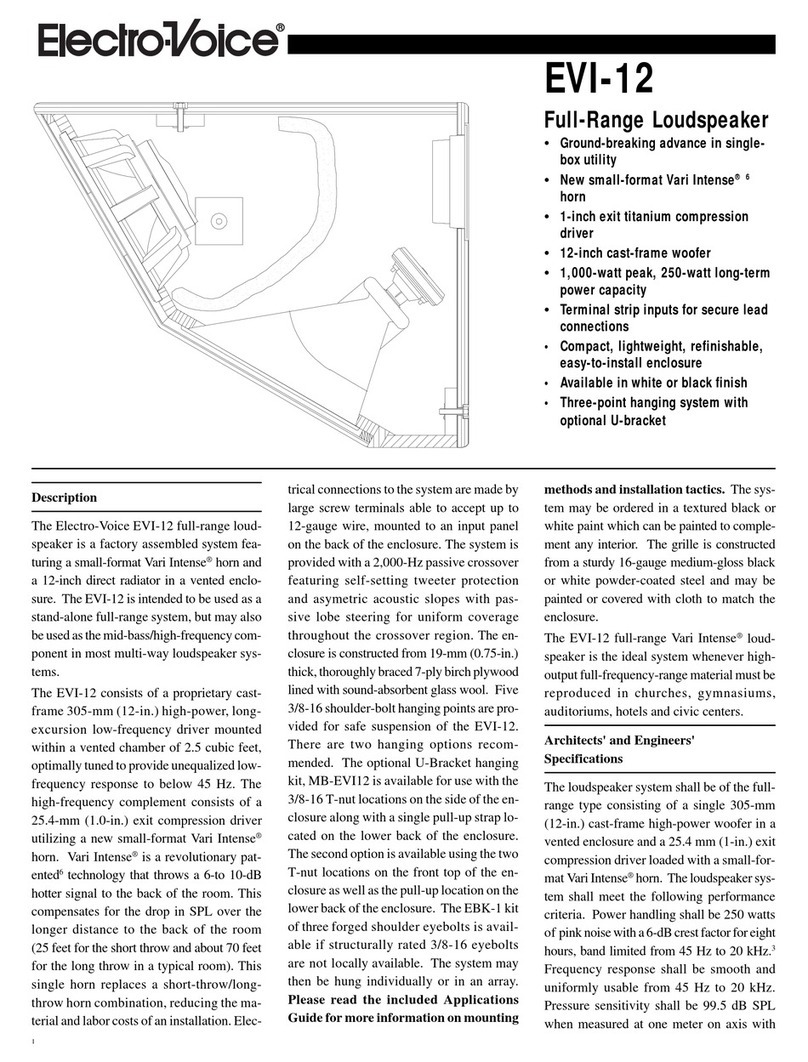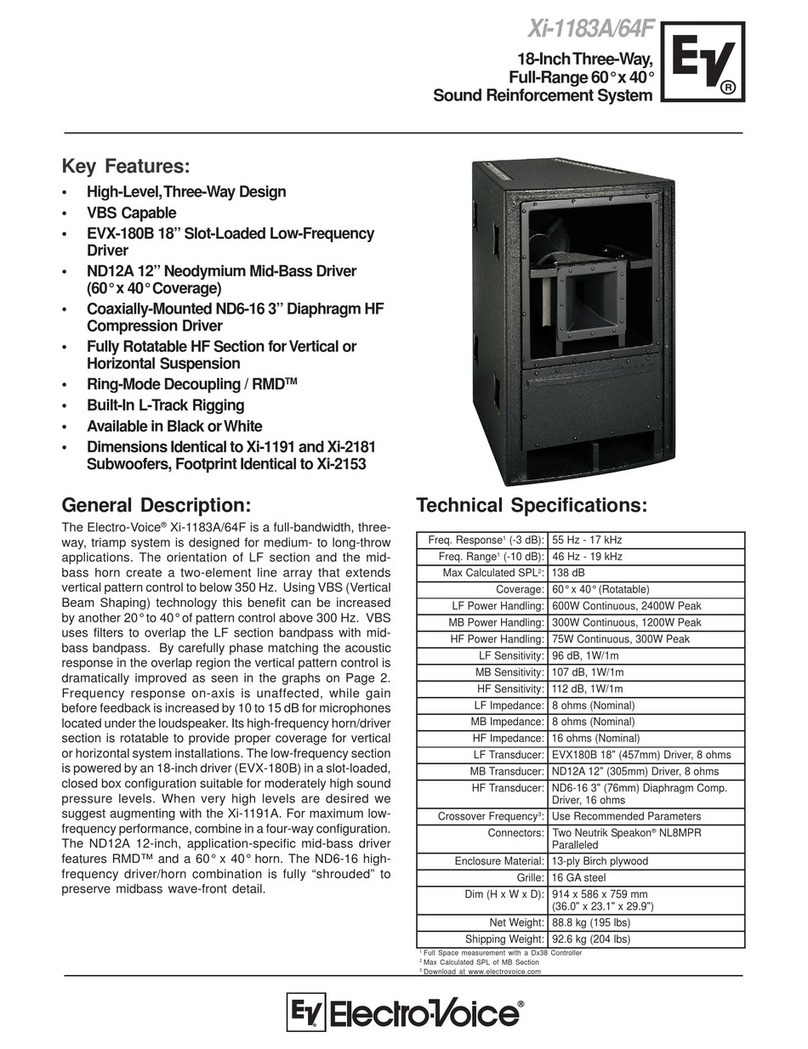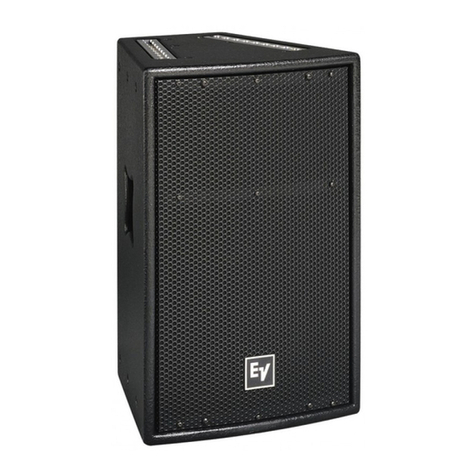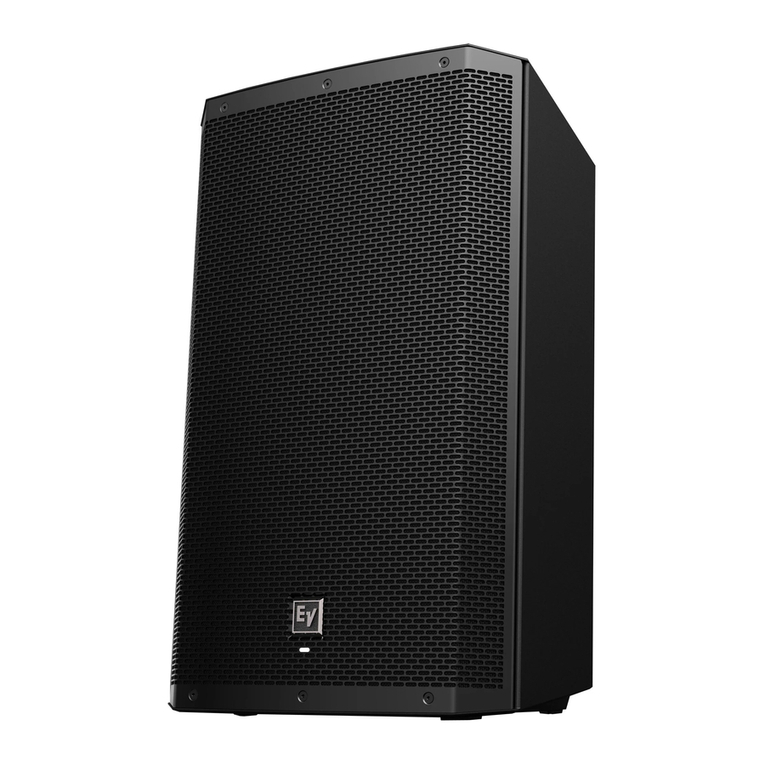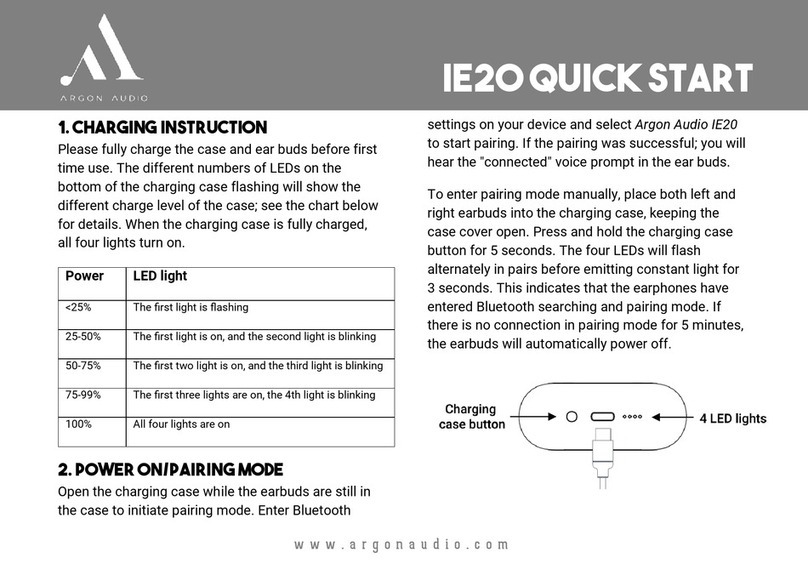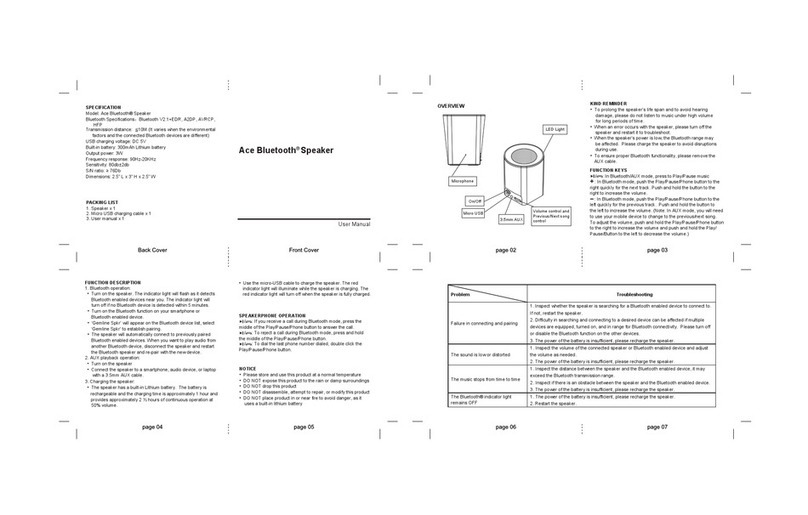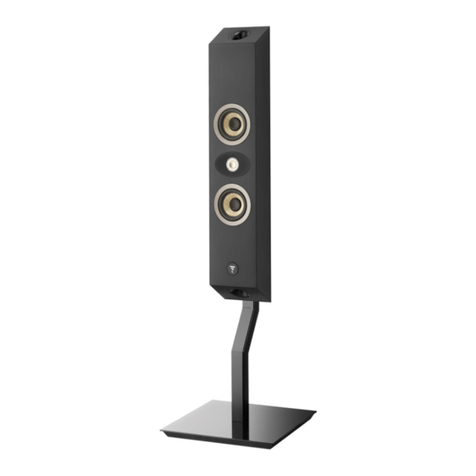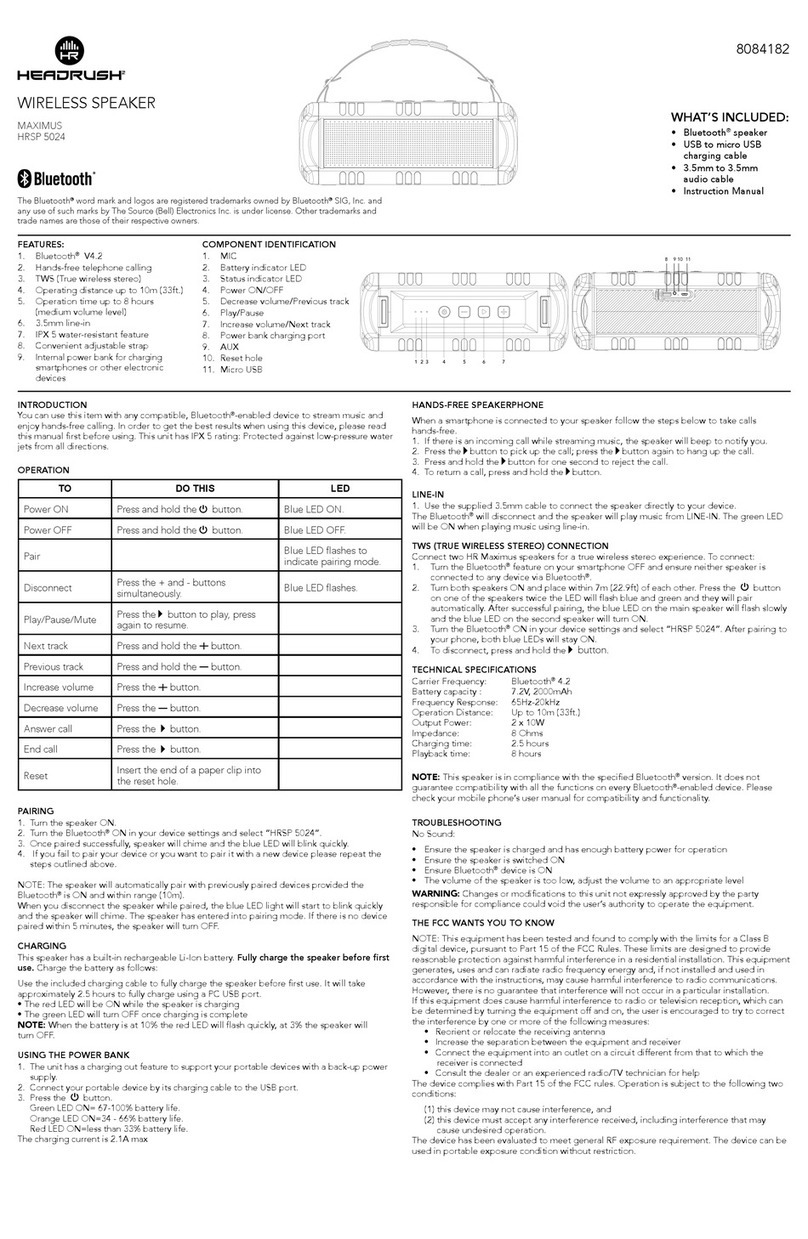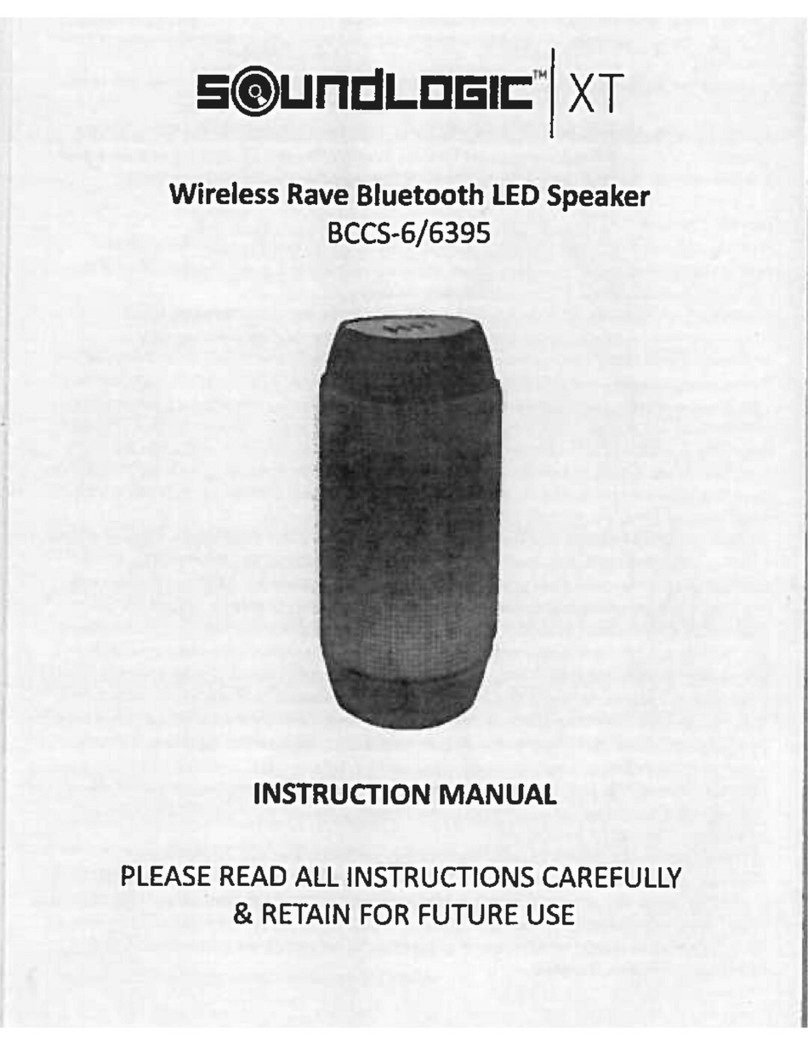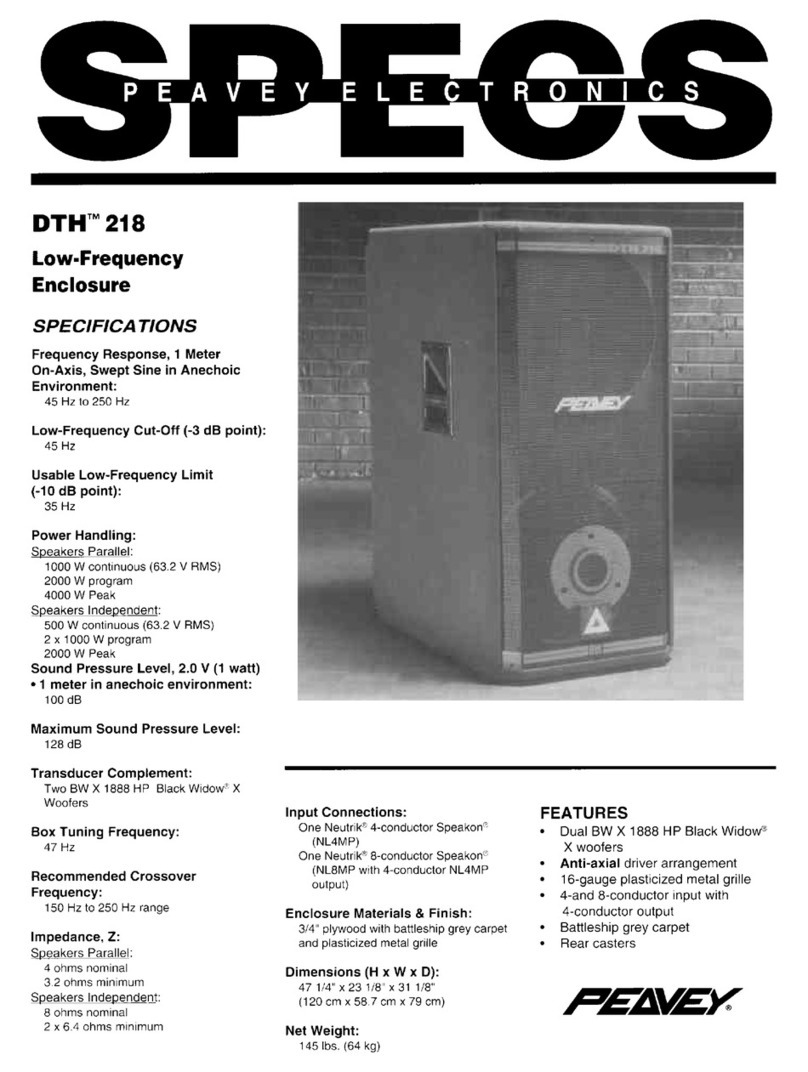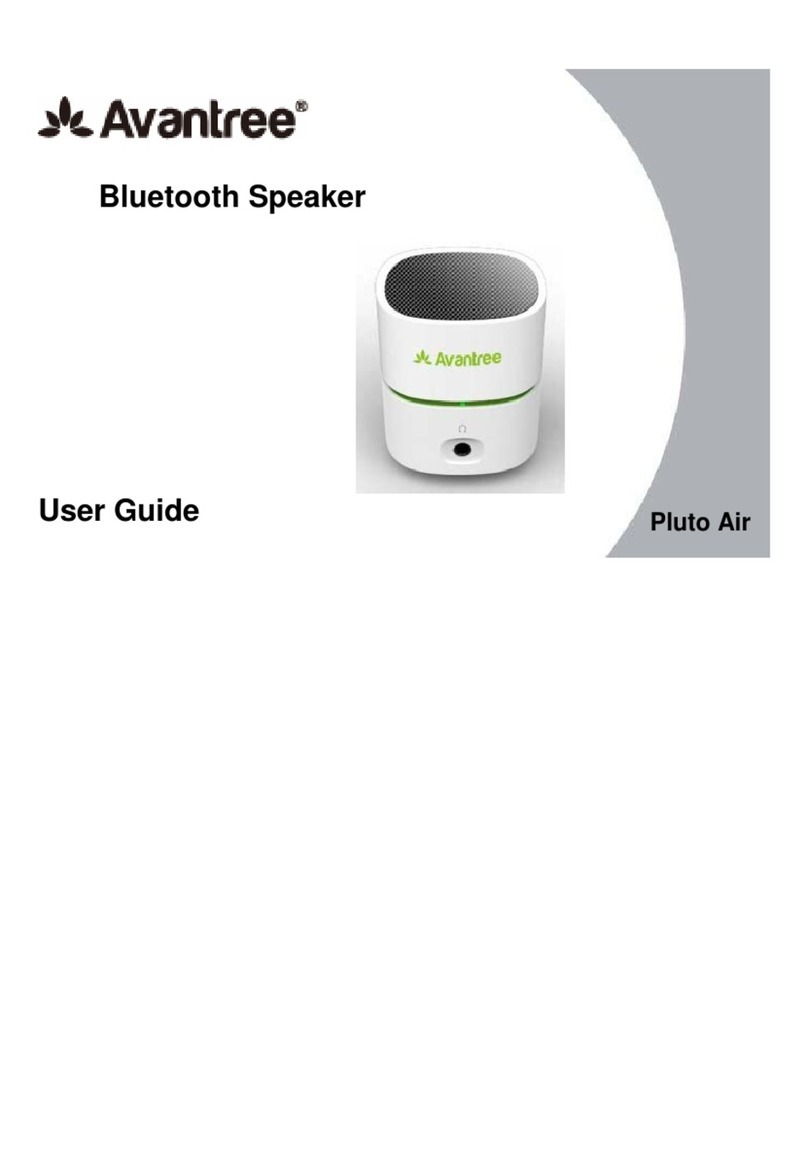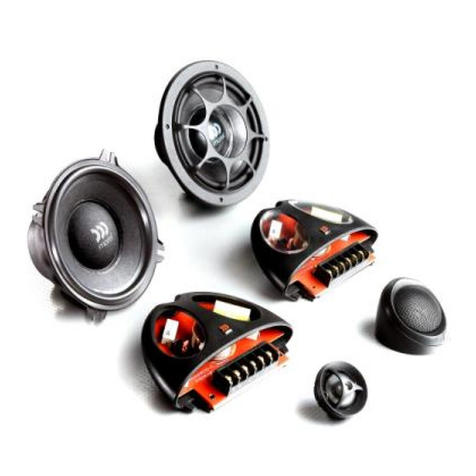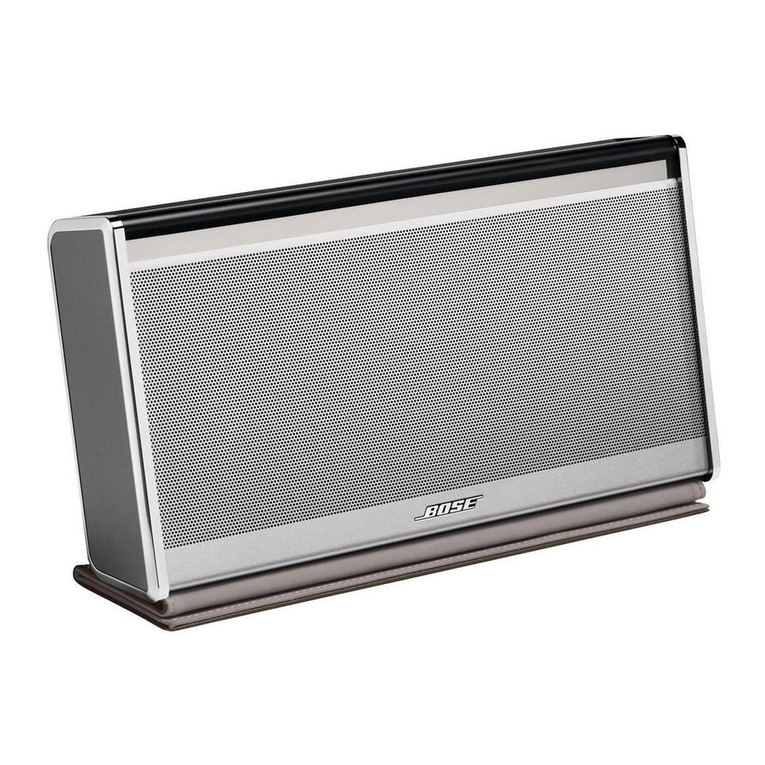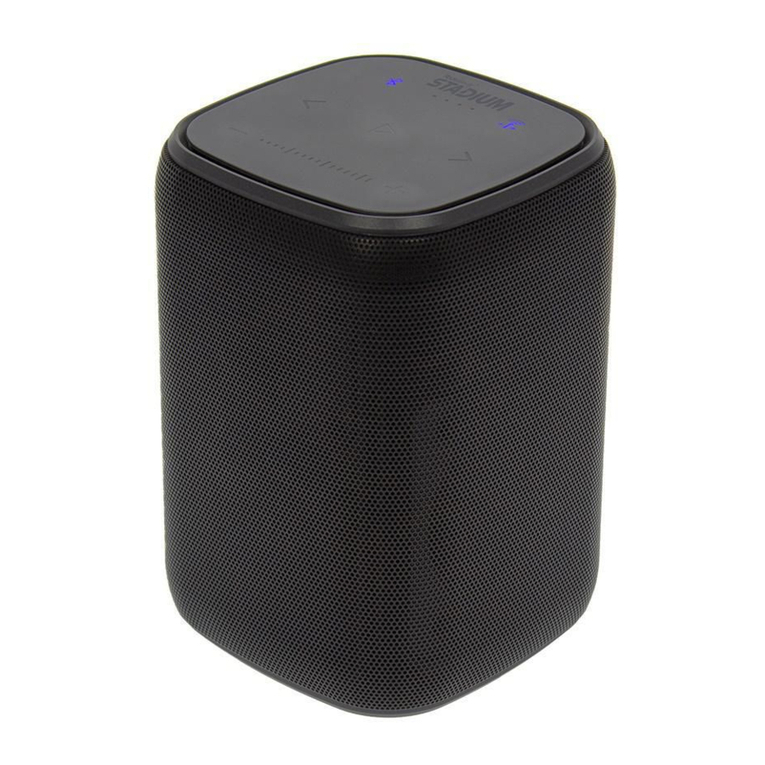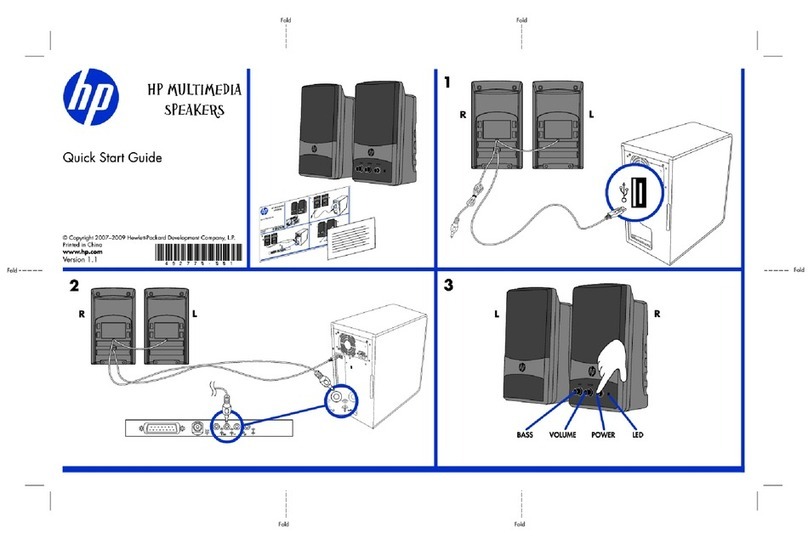
Eliminator®Monitor
Eliminator
®
Monitor
2
hardwood. Alternate layers are perpen-
dicularly bonded under intense heat and
pressure to form panels of superior unifor-
mity. Unlike many grades of plywood,
Road-Wood is dimensionally stable,
water resistant and free from voids.
A combination of dado-cut joints and
tough adhesives ensure a sonically dead
enclosure free from panel resonances.
The densely woven, industrial-grade,
abuse-resistant carpeting provides a fin-
ish that is both attractive and highly du-
rable. Heavy-duty corner protectors, firmly
secured rubber feet, recessed handles and
a protective metal grille complete the pic-
ture and ensure that the Eliminator Moni-
tor speaker system is ideally suited to a
long and reliable life on the road.
Frequency Response
The combination of a 15-inch woofer, wide-
bandwidth high-frequency driver and an equal-
ized crossover results in the wide and smooth
overall response shown in Figure 1. This re-
sponse was measured at 3.05 meters (10feet),
using a 4-volt swept sine-wave input in an
anechoic chamber. No external equalization
was used. Figure 1 has been averaged and
corrected for 1 watt at 1 meter.
Connections
The Eliminator monitor is equipped with two
parallel 1/4-inch phone jacks. (The Elimina-
tor Monitor E version has two parallel Neutrik
Speakon®NL4MP connectors.) Another sys-
tem can be connected in parallel by using the
other connector. Care must be taken not to
abuse the amplifier by connecting impedances
which are too low.
Constant-Directivity Speaker System
The crossover frequency and speaker compo-
nent geometries have been selected so that the
directional characteristics of the woofer and
constant-directivity horn match at the crossover
frequency to create a special system type
the constant-directivity system. At higher fre-
quencies the vertical coverage pattern remains
constant and the horizontal pattern
smoothly transitions to a 55° angle above
5,000 Hz. Response within the 80° x 55° rated
coverage angle is uniform, which means
dependable coverage without hot spots
or dead zones at certain frequencies. The
80° x 55° dispersion characteristic also
helps avoid early reflections from nearby
surfaces which could degrade perfor-
mance. The controlled directivity of the
high- and low-frequency transducers also
eliminates response irregularities caused
by diffraction off nearby enclosure edges
and, in combination with an essentially flat
on-axis frequency response, produces a
total acoustic power output that is uniform
with frequency.
Directivity
A unique feature of the Eliminator Moni-
tor is the constant-directivity dispersion
provided by the 80° x 55° horn. The polar
response of the system at selected one-
third-octave bandwidths is shown in Fig-
ure 5. These polar responses were mea-
sured in an anechoic environment at 6.1
meters (20 feet) using one-third-octave
pink-noise inputs. The frequencies se-
lected are fully representative of the polar
response of the system. Beamwidth of the
system utilizing the complete one-third-
octave polar data is shown in Figure 6.
Directivity factor, R, and directivity index,
Di, are plotted in Figure 7.
Power-Handling Capacity
Electro-Voice components and systems are
manufactured to exacting standards, en-
suring they will hold up, not only through
the most rigorous of power tests, but also
through continued use in arduous, real-
life conditions. The EIA Loudspeaker
Power Rating Full Range (ANSI/EIA RS-
426-A 1980) uses a noise spectrum which
mimics typical music and tests the ther-
mal and mechanical capabilities of the com-
ponents. Electro-Voice will support rel-
evant additional standards as and when
they become available. Extreme, in-house
power tests, which push the performance
boundaries of the woofers, are also per-
formed and passed to ensure years of
trouble-free service.
Specifically, the Eliminator passes ANSI/
EIA RS-426-A 1980 with the following values:
RSR = 5.175 ohms (1.15 x RE)
PE(MAX) = 350 watts
Test voltage = 42.55 volts rms,
85.10 volts peak (+6dB)
The peak power-handling capacity of a
woofer is determined by the peak test volt-
age amount. For the Eliminator Monitor, a
85.10-volt-peak-test voltage translates into
1,400-watts short-term peak power-handling
capacity. This is the equivalent of four times
the average power-handling capacity, and
is a peak that can be sustained for only a
few milliseconds. However, this sort of short
duration peak is very typical in speech and
music. Provided the amplifier can reproduce
the signal accurately, without clipping, the
woofer will also perform accurately and reli-
ably, even at these levels.
Amplifier Recommendations.
The power-handling rating of the Elimina-
tor®Monitor is 350-watts continuous. The
specific tests used employ a crest factor
(ratio of peak energy to continuous en-
ergy) of at least 6 dB. During extended
testing, the Eliminator®Monitor is routinely
subjected to peak levels far in excess of its
continuous rating of 350 watts. Many am-
plifier designs are capable of producing
peak power levels in excess of their ratings
as well, so exact pairing of loudspeaker
rating and amplifier ratings is not neces-
sary. Amplifier continuous ratings of 250
watts to 400 watts are suggested. Larger
amplifier ratings are recommended for maxi-
mum dynamic range, but it should be rec-
ommended that amplifier continuous lev-
els (as opposed to peak levels) be within
the range quoted for the Eliminator® Moni-
tor long-term average power-handling rating.
Service
In the unlikely event the Eliminator Moni-
tor requires service, the woofer and driver
can both be replaced or serviced from the
front. A service data sheet is available from
Electro-Voice.
Architects and Engineers
Specifications
The loudspeaker shall be a compact
vented-box type. The low frequencies
